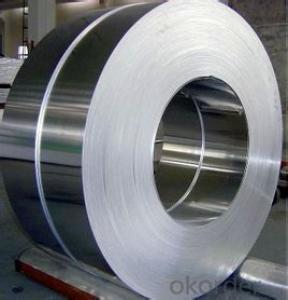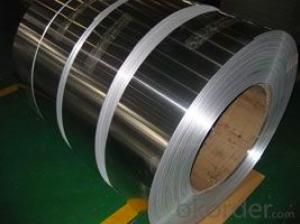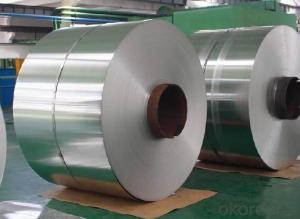Stainless Steel Coil Cold Rolled 304 BA With Great Quality
- Loading Port:
- China main port
- Payment Terms:
- TT OR LC
- Min Order Qty:
- 500 m.t.
- Supply Capability:
- 15000 m.t./month
OKorder Service Pledge
OKorder Financial Service
You Might Also Like
Stainless Steel Coil Cold Rolled 304 With Good Quality
1.Structure of Stainless Steel Coil Cold Rolled 304 With Good Quality
Cold Rolled stainless steel Coil with good quality is one of the raw material of the cold
rolled stainless steel Coil, which can be used directly in many places. Stainless Steel
(Stainless Steel) is short for acid-proof Stainless Steel, resistant to weak corrosive
medium such as air, steam, water, or with a Stainless Steel grade.
2.Main Features of Prefabricated Steel Structure High Building Project
1) Weld-ability: The purpose of the different requirement for welding performance are
different.1 Kind of tableware generally do not require the performance of welding, even
including some pot class enterprise. But the vast majority of products all need raw
materials welding performance is good, like the 2 kinds of tableware, thermos flask, steel
pipes, water heaters, water dispensers, etc.
3. Stainless Steel Coil Cold Rolled 304 With Good Quality Images
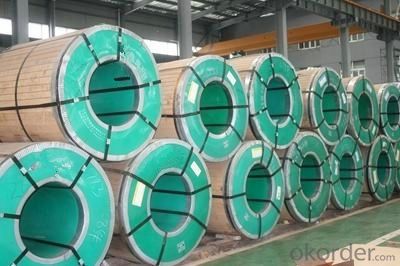
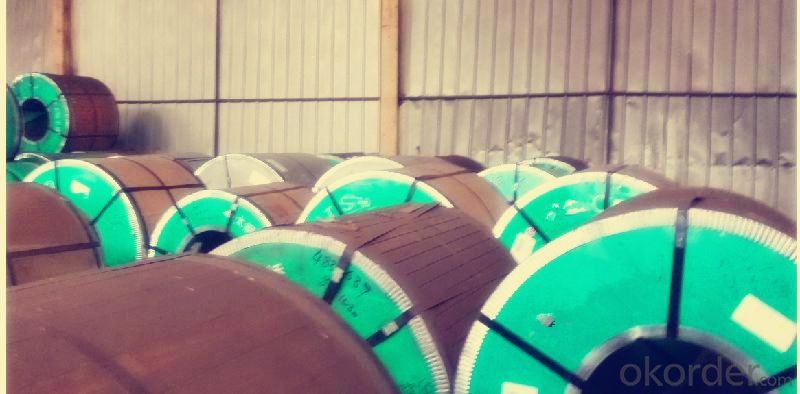
4. Stainless Steel Coil Cold Rolled 304 With Good Quality Specification
The word "stainless steel" is not merely refers to a pure stainless steel, but said more than
one hundred kinds of stainless steel industry, the development of each stainless steel has
good performance in their specific applications. The key to the success of the first is to
make clear purpose, and then determine the correct material. Related to architectural
construction applications usually only six types of steel. They contain 17 ~ 22% chromium,
good steel contains nickel. Add molybdenum can further improve the atmospheric
corrosion resistance, especially containing chloride atmospheric corrosion resistance.
Stainless steel often according to the state of organization can be divided into: martensite
steel, ferritic steel, austenitic steel, austenitic (two-phase) - ferrite stainless steel and
precipitation hardening stainless steel, etc. In addition, according to ingredients can be
divided into: chromium stainless steel, chromium nickel stainless steel and chromium
manganese nitrogen stainless steel, etc.
Austenitic, ferritic duplex stainless steel The advantages of both austenitic and ferritic
stainless steel, and has the superplasticity. Austenite and ferrite The title Each accounts
for about half of the stainless steel. In the case of contain low C, Cr content was 18% ~
18%, Ni content at 3% ~ 3%. Some steel containing Mo, Cu, Si, Nb, Ti, N and other
alloying elements. This kind of steel both austenite and ferrite stainless steel, the
characteristics of compared with ferrite, plasticity and toughness is higher, no room
temperature brittleness, intergranular corrosion resistance and welding performance were
significantly increased, while maintaining a ferritic stainless steel of 475 ℃ brittleness and
high thermal conductivity, has the characteristics of superplasticity. Compared with
austenitic stainless steel, high strength and resistance to intergranular corrosion and
resistance to chloride stress corrosion is improved obviously. Duplex stainless steel has
excellent resistance to pitting corrosion performance, is also a kind of nickel and stainless
steel.
5. Applications of Stainless Steel Coil 304 With Good Quality
1. Kitchenware: tableware, cookware, Stoves…
2. Food packing: storage cans, food containers…
3. Construction: bridge, roofing, wall, decoration, bathroom accessories…
4. Precision instruments: electrical products, aerospace…
5. Others: automotive parts, machine building, chemical processing, farming…
6.FAQ of Stainless Steel Coil 304 With Good Quality
We have organized several common questions for our clients,may help you sincerely:
①How about your company?
A world class manufacturer & supplier of castings forging in carbon steel and alloy steel,
is one of the large-scale professional investment casting production bases in China,
consisting of both casting foundry forging and machining factory. Annually more than 800
0 tons Precision casting and forging parts are exported to markets in Europe,America an
d Japan. OEM casting and forging service available according to customer’s requirement.
②How to guarantee the quality of the products?
We have established the international advanced quality management system,every link
from raw material to final product we have strict quality test;We resolutely put an end to
unqualified products flowing into the market. At the same time, we willprovide necessary
follow-up service assurance.
③How is the packaging and delivery?
Standard export packing (Coil: waterproof paper + protective steel ring; Circle: wooden
box), or as your requirement and the delivery term is based on the project.
④How long can we receive the product after purchase?
In the purchase of product within 20 working days, We will arrange the factory delivery as
soon as possible. The specific time of receiving is related to the state and position of
customers. Commonly 20 to 40 working days can be served.
- Q:Can stainless steel strips be used in architectural railing systems?
- Indeed, architectural railing systems can make use of stainless steel strips. The durability, corrosion resistance, and aesthetic charm of stainless steel make it a favored material in the realm of architecture. To meet the design specifications of the railing system, stainless steel strips can be shaped and sized in diverse ways. Furthermore, stainless steel boasts low maintenance requirements and is capable of withstanding harsh environmental conditions, rendering it a perfect choice for outdoor applications. All in all, stainless steel strips present a robust and visually delightful alternative for architectural railing systems.
- Q:Can stainless steel strips be cut or shaped?
- Yes, stainless steel strips can be cut or shaped. Stainless steel is known for its durability and versatility, making it possible to cut and shape it into various forms. Cutting stainless steel strips can be done using different methods such as shearing, sawing, or laser cutting. Shaping stainless steel strips can be achieved through processes like bending, rolling, or forming. These techniques allow stainless steel strips to be customized to meet specific design or functional requirements in different industries, including construction, automotive, and manufacturing.
- Q:How do stainless steel strips perform in high-pressure steam?
- Known for their excellent performance in high-pressure steam environments, stainless steel strips have inherent resistance to corrosion and high-temperature strength, enabling them to withstand the harsh conditions associated with high-pressure steam applications. The presence of chromium in stainless steel forms a protective layer that prevents oxidation and maintains the material's integrity even at elevated temperatures. Moreover, stainless steel strips demonstrate low thermal expansion and possess remarkable mechanical properties, making them suitable for high-pressure steam systems. In conclusion, stainless steel strips guarantee the safety and efficiency of steam applications, as they are highly reliable and perform exceptionally well in high-pressure steam environments.
- Q:Can stainless steel strips be used in the water treatment industry?
- Yes, stainless steel strips can be used in the water treatment industry. Stainless steel is highly resistant to corrosion and rust, making it an ideal material for applications involving exposure to water and various chemicals. Stainless steel strips can be used for various purposes in water treatment plants, such as constructing tanks, pipes, and fittings. They are also used for fabricating filter screens, sieves, and other filtration equipment. Additionally, stainless steel strips are easy to clean and maintain, which is crucial in the water treatment industry where cleanliness and hygiene are of utmost importance.
- Q:Are stainless steel strips suitable for conveyor belts?
- Yes, stainless steel strips are suitable for conveyor belts. Stainless steel is a durable and corrosion-resistant material, making it ideal for applications that require a clean and hygienic environment. The smooth and flat surface of stainless steel strips allows for easy movement of materials on the conveyor belt without any snagging or damage. Additionally, stainless steel strips offer excellent strength and temperature resistance, making them suitable for various industries such as food processing, pharmaceuticals, and automotive. Furthermore, stainless steel is easy to clean and maintain, which is crucial in industries where hygiene is a top priority. Overall, stainless steel strips are a reliable and efficient choice for conveyor belts.
- Q:Are stainless steel strips suitable for brewery piping?
- Yes, stainless steel strips are suitable for brewery piping. Stainless steel is the preferred material for brewery piping due to its excellent corrosion resistance, durability, and hygienic properties. It is resistant to rust, stains, and chemical reactions, making it ideal for use in the brewing industry where contact with liquids and cleaning agents is frequent. The stainless steel used in brewery piping is typically of a high-grade, such as 304 or 316 stainless steel, which offers superior resistance to corrosion and pitting. This ensures that the pipes can withstand the harsh conditions and acidic or alkaline solutions commonly found in breweries, without deteriorating over time. Furthermore, stainless steel pipes are easy to clean and maintain, which is crucial in a brewery to prevent contamination and maintain the quality of the beer. The smooth surface of stainless steel prevents bacteria from adhering to the pipes, making it a hygienic choice for food and beverage industries. Overall, stainless steel strips are highly suitable for brewery piping due to their corrosion resistance, durability, and hygienic properties, making them a reliable and long-lasting choice for the brewing industry.
- Q:How do you prevent galvanic corrosion of stainless steel strips?
- To prevent galvanic corrosion of stainless steel strips, there are several measures that can be taken: 1. Proper material selection: Choose stainless steel strips that have a high resistance to galvanic corrosion. Austenitic stainless steels, such as grades 304 and 316, are commonly used due to their excellent corrosion resistance properties. 2. Insulation and isolation: Ensure that the stainless steel strips are insulated or isolated from other metals that have dissimilar electrochemical properties. This can be achieved by using non-conductive gaskets, insulating coatings, or by placing a barrier between the stainless steel and the dissimilar metal. 3. Avoid direct contact with electrolytes: Galvanic corrosion occurs when there is an electrolyte present, such as moisture or certain chemicals. To prevent this, it is important to avoid direct contact between the stainless steel strips and these electrolytes. This can be done by using protective coatings, keeping the strips dry, or using gaskets or seals to create a barrier. 4. Cathodic protection: Implementing cathodic protection can help prevent galvanic corrosion by making the stainless steel strips the cathode in the galvanic cell. This can be achieved through methods such as sacrificial anodes or impressed current systems. By supplying a more easily corroded metal to act as an anode, the stainless steel strips are protected from galvanic corrosion. 5. Regular maintenance and cleaning: Proper maintenance and cleaning of the stainless steel strips can help prevent the build-up of contaminants and corrosive substances that can accelerate galvanic corrosion. Regular inspection and cleaning can help identify and address any potential issues before they become major problems. By following these preventive measures, the risk of galvanic corrosion of stainless steel strips can be significantly reduced, ensuring their long-term durability and performance.
- Q:Are stainless steel strips heat resistant?
- Yes, stainless steel strips are heat resistant. Stainless steel is known for its ability to withstand high temperatures without deformation or damage. It has a high melting point and can retain its strength even at elevated temperatures. This makes stainless steel strips suitable for various applications that involve exposure to heat, such as in industrial processes, cooking utensils, and automotive components. Stainless steel's heat resistance also contributes to its durability and longevity, as it can withstand thermal stress and maintain its structural integrity over time.
- Q:What is the corrosion resistance of stainless steel strips in different environments?
- Stainless steel strips have excellent corrosion resistance in a wide range of environments. This is due to the presence of a protective layer called chromium oxide on the surface of the steel. The chromium oxide layer forms naturally when the steel is exposed to oxygen, creating a passive barrier that prevents further corrosion. In general, stainless steel strips exhibit high resistance to corrosion in atmospheric conditions, making them suitable for outdoor applications. They can withstand exposure to moisture, rain, and even saltwater without significant degradation. This makes stainless steel an ideal choice for marine environments or coastal areas where corrosion is a common concern. Stainless steel strips also have exceptional resistance to many chemicals and acids. They can withstand exposure to various organic and inorganic compounds, making them suitable for use in chemical processing plants, pharmaceutical industries, and other corrosive environments. However, it is important to note that certain concentrations or combinations of chemicals can still cause corrosion in stainless steel, so it is essential to select the appropriate grade of stainless steel for specific applications. The corrosion resistance of stainless steel strips can vary depending on the specific alloy and surface finish. For instance, austenitic stainless steels, such as grades 304 and 316, offer excellent resistance to corrosion in most environments, including acidic and alkaline conditions. Ferritic and martensitic stainless steels, on the other hand, may have lower corrosion resistance but can still perform well in many non-corrosive or mildly corrosive environments. In summary, stainless steel strips possess remarkable corrosion resistance in a wide range of environments. Their ability to resist corrosion makes them highly versatile and suitable for various applications, including construction, automotive, food processing, and many others. However, it is important to consider the specific conditions and requirements of the environment when selecting the appropriate grade and finish of stainless steel for optimal corrosion resistance.
- Q:Can stainless steel strips be used in the production of marine equipment?
- Yes, stainless steel strips can indeed be used in the production of marine equipment. Stainless steel is a highly versatile and corrosion-resistant material, making it an excellent choice for marine applications. It offers excellent strength, durability, and resistance to saltwater, making it suitable for use in various marine equipment such as shipbuilding, offshore platforms, marine engines, and propellers. Stainless steel strips can be shaped, welded, and formed into different components and structures required for marine equipment, ensuring a long-lasting and reliable performance in the harsh marine environment.
1. Manufacturer Overview |
|
|---|---|
| Location | |
| Year Established | |
| Annual Output Value | |
| Main Markets | |
| Company Certifications | |
2. Manufacturer Certificates |
|
|---|---|
| a) Certification Name | |
| Range | |
| Reference | |
| Validity Period | |
3. Manufacturer Capability |
|
|---|---|
| a)Trade Capacity | |
| Nearest Port | |
| Export Percentage | |
| No.of Employees in Trade Department | |
| Language Spoken: | |
| b)Factory Information | |
| Factory Size: | |
| No. of Production Lines | |
| Contract Manufacturing | |
| Product Price Range | |
Send your message to us
Stainless Steel Coil Cold Rolled 304 BA With Great Quality
- Loading Port:
- China main port
- Payment Terms:
- TT OR LC
- Min Order Qty:
- 500 m.t.
- Supply Capability:
- 15000 m.t./month
OKorder Service Pledge
OKorder Financial Service
Similar products
New products
Hot products
Related keywords

